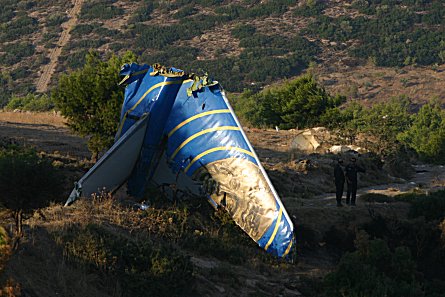Recommendations by the Greek Air Accident Investigation and Aviation Safety Board resulting from its report into the August 2005 crash of a Helios Airways Boeing 737-300 have been taken up by the European Aviation Safety Agency. Changes involve additional instructions to cabin crew in the event that oxygen masks deploy during the climb, and other measures.
The Helios accident was the result of an aircraft climbing to its cruising level without automatic cabin pressurisation selected, the pilots misinterpreting the cabin pressure alert when it operated, and the aircraft flying its programmed route from Cyprus to Greece on flight director/autopilot with all on board unconscious from hypoxia.
The crash occurred in an uninhabited area near the approach to Athens airport when the fuel ran out. All 121 people on board died.
 |
|---|
EASA has advised the accident board's chief investigator Capt Akrivos Tsolakis that it has issued a safety information bulletin to operators amending the procedures for cabin crew during the climb.
If the passenger oxygen masks deploy, indicating a failure of the cabin to pressurise, and if the aircraft does not level out or begin a descent, the cabin crew are to check that the pilots are aware of the situation and have donned their oxygen masks.
In addition, EASA has undertaken to examine rulemaking on three other issues: mandating the inclusion of cabin altitude as a parameter on all flight data recorders; study the feasibility of installing crash-protected flightdeck image recorders to retain a record of crew actions and switch selection; and the mandatory provision of hypoxia awareness training for pilots and cabin crew, using simulation equipment the reduces the proportion of oxygen in the air supplied to the trainees while they perform tasks.
Source: Flight International



















